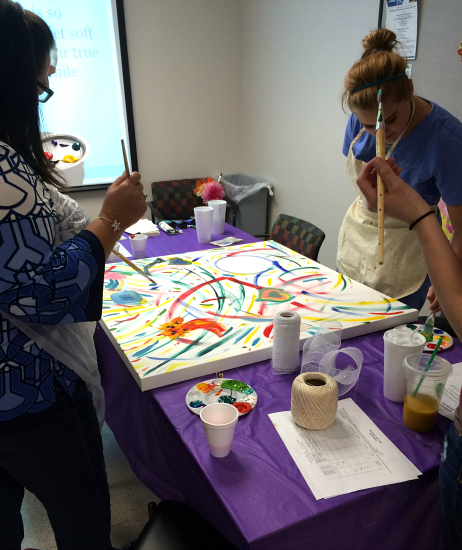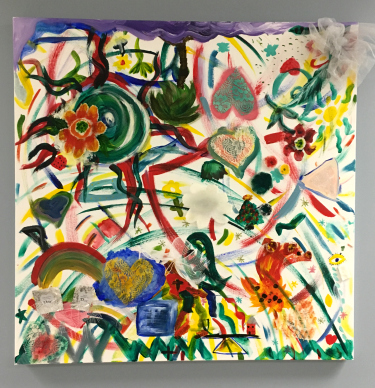 Nurses at St. John Providence hospital in Detroit have created an abstract mixed media painting to express what nursing means to them. Creating the painting also helped them better understand the alternative medicine practices that can help patients with cancer diagnoses cope and seek comfort.
Nurses at St. John Providence hospital in Detroit have created an abstract mixed media painting to express what nursing means to them. Creating the painting also helped them better understand the alternative medicine practices that can help patients with cancer diagnoses cope and seek comfort.
The painting was created as part of a project developed by Lauren Sauve, DNP, to educate nurses on how alternative medicine practices like art therapy, massage therapy and aromatherapy can help patients cope with their diagnoses. The painting consists of images that focus on how art therapy can comfort patients.
The painting currently hangs in a conference room in the oncology unit at St. John’ Providence’s main location where nurses gather for educational meetings and patients come for art therapy.
We recently asked Sauve to tell us more about this project:
What is your affiliation to Wayne State?
I have a bachelor’s of science in nursing from Wayne State University. I worked as a registered nurse for two years before I decided that I wanted to pursue higher education. Because of my great educational experience at Wayne State, I knew I wanted to go back there for my advanced education. In 2016 I graduated with a doctorate in nursing practice.
 Why did you create this painting?
Why did you create this painting?
I created this painting to improve the quality of care for the oncology population on the in-patient unit. My project focused on bringing an experiential holistic experience to the nurses.
My goal was to elicit an emotional response from the nurses so they could better understand how complementary and alternative medicine practices affect the patients who use these modalities to cope with their disease. The goal was to create positive change in the hospital by having the nurses commit to incorporating complementary and alternative medicine into their nursing practices.
According to the National Institutes of Health in 2016 it was reported during the 2012 National Health Interview Survey that U.S. adults spend $28.3 billion out of pocket on visits to complementary and alternative medicine practitioners. Furthermore, cancer patients are among the top consumers of alternative therapies as patients and are looking for integrative health interventions to improve their health of the mind, body, and spirit.
What has been the response to the painting?
The feedback surrounding the project has been positive. The nurses who participated reported the project made them feel, calm, restored, relaxed, balanced, less worried and more clear-minded. Patients also enjoy seeing the art and it has encouraged many of them to explore this therapy themselves. When I was working on the unit, I would also use it to inspire the patients to get out of their rooms and come see what their nurses had worked on as a team. Art therapy became a time to socialize with other patients as well.
At the completion of the event, the nurses were asked if they were committed to change, and if after their own experiences with the complementary and alternative therapies they would be more likely to offer it to their own patients. All 15 participants strongly agreed they would, which was a statistically significant finding. The nurses’ personal experiences of complementary and alternative therapies stimulated interpersonal learning, united the nurses, and each came out of the experience changed. Overall, nursing can play a significant role in the utilization of these complementary and alternative therapies when caring for patients, and it was concluded that it was valid to promote these therapies in an in-patient setting.